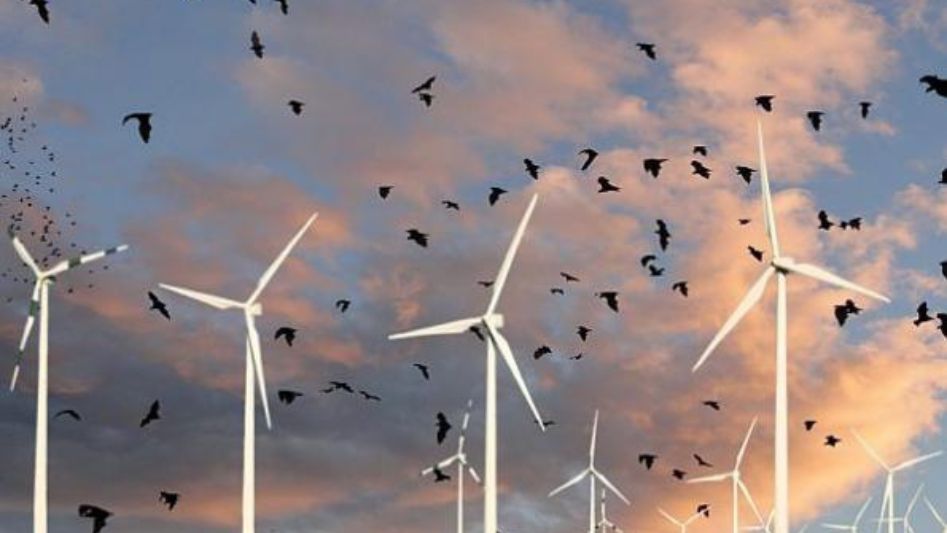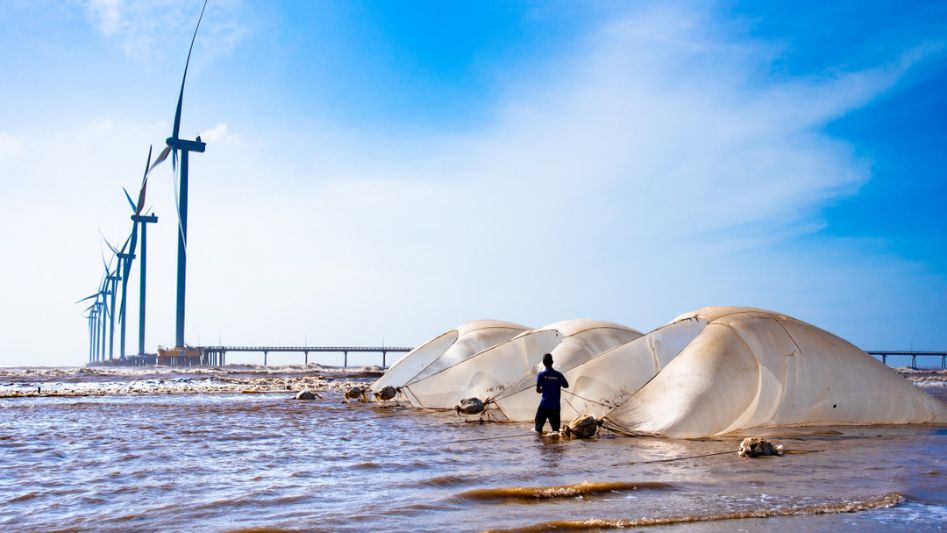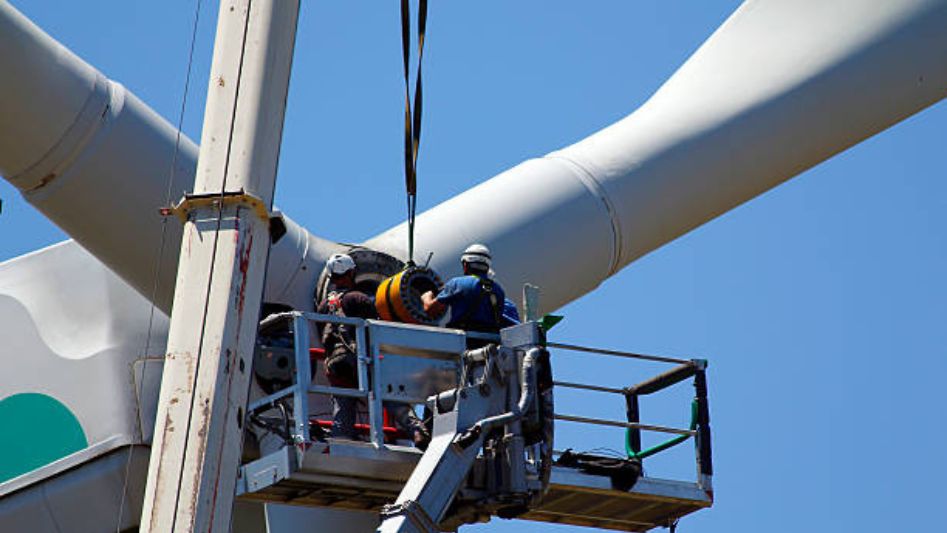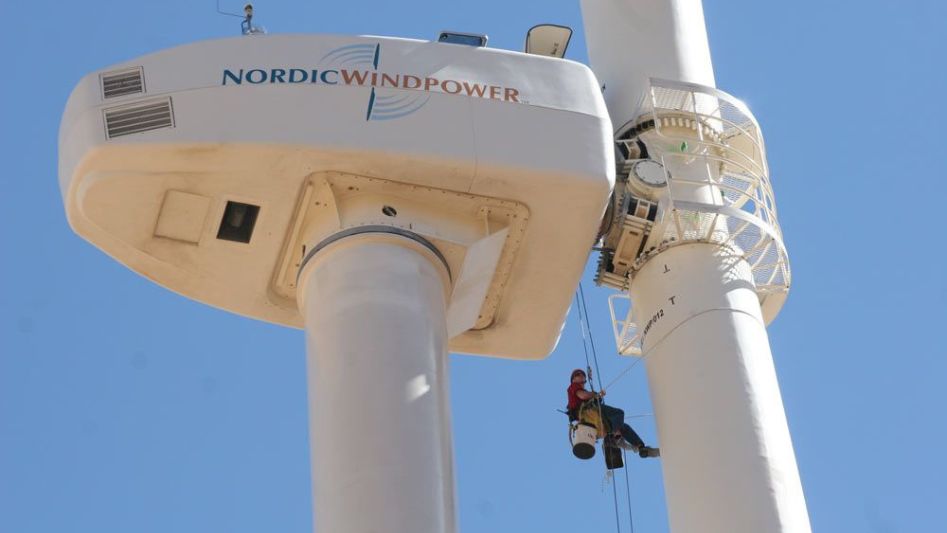Wind turbines are often installed in rural areas and can provide a source of electricity for your home. However, there are some challenges to it.
Table of Content

Introduction
Over the last several years, wind turbines have been springing up all over the place. However, the majority of these installations are on a grid. Solar power has been an innovative technology for the production of electricity on a residential scale, but imagine if wind turbines could be miniaturized and installed on residential rooftops. What would happen if we were able to construct a wind turbine wall on the exterior of the building? Although the concept of diversifying the sources of energy used to power our homes seems like a good idea in principle, the question remains as to whether or not it makes practical sense to add small wind turbines on top of solar panels. Let’s see if we can reach a conclusion on this, shall we?
Although I’ve had solar panels on my roof for a little over three years at this point, wind turbines have always been something that’s really interested me. Nonetheless, given the location of my house, it just does not make any sense to do so. However, it does make sense, in general, to diversify your energy sources in order to offer yourself greater resilience and independence. It’s possible, for instance, that your wind turbine will continue to generate electricity even in the middle of the night, even if your solar panels won’t, which is why the two technologies seem to complement each other. And many of you have stated the same thing in the comments, inquiring about putting wind turbines on your house, but unfortunately, the outlook is not exactly bright… at least not for your home.
Wind energy is becoming more popular all over the globe as an environmentally friendly technology that can provide us with the electricity we need while reducing our carbon footprint. The recent drop in pricing is one factor that has contributed to the surge in popularity. The amount of power produced by wind grew by 170 terawatt hours (TWh) from 2019 to 2020, an increase of 11% in only one year. Wind power overtakes hydropower as the most significant form of renewable energy used on a global scale, producing 1,592 terawatt hours (TWh) of pollution-free electricity per year when hydropower is removed from the equation. To reiterate, though, this is virtually entirely at the grid size.
The Annual Energy Outlook 2021 developed by the United States Energy Information Administration (EIA) shows that the cost of wind power is approximately US$31.45/MWh in levelized costs. This is pretty competitive with the US$31.30/MWh that is charged for standalone solar. In contrast to wind energy, solar energy has been extensively used at small-scale installations, such as residences. In every sense of the term, my home qualifies as a “small-scale installation.”
Why can’t wind turbines be made smaller so that they may be erected on residential rooftops? This seems like a simple issue. However, before we get to those firms, let’s take a deeper look at the fundamentals of how traditional wind turbines function, which sort of demonstrates the hurdles that need to be overcome. There are numerous companies now working toward making this a reality.

The rotor blades of wind turbines are typically quite large (usually around 50 meters). The length of the rotor blades is the most important factor in determining how much power a wind turbine is able to extract from the same amount of wind. This indicates that a micro-sized turbine will produce much less energy than a huge turbine when subjected to the same level of wind speed. The collected kinetic energy causes the rotor of the turbine to whirl, which in turn causes it to produce electricity as the blades rotate.
A pitch control mechanism may be found on the front side of large-scale wind turbines, such as those that generate MW-scale electricity. This device can vary the angle at which the blades are tilted in order to collect more energy. The low-speed revolution of the blades is then converted into a higher-speed rotation to drive the generator effectively via a gearbox located within the nacelle, which is the primary body that sits atop the tower. In addition, there are rotor brakes installed for safety, an anemometer to detect wind speed, and a yaw control system that regulates the horizontal orientation of the turbine. All of these different systems cooperate with one another to enhance the turbine’s performance and prevent it from damaging itself. There are a great number of moving pieces involved.
This is at a huge size; how do the models look when they are shrunk down? The power output of micro wind turbines normally ranges from 400W to 500W, but this number may range anywhere from 10kW to 20kW depending on the application. Their blades typically have a diameter ranging from 1.5 to 3.5 meters and are constructed out of synthetic materials such as carbon fiber reinforced polymers to ensure that they are both sturdy and lightweight. Small wind turbines often have passive yaw systems and mechanical pitch control, or even have no pitch control at all, in contrast to the active yaw systems and electronic pitch controls that are utilized by large-scale wind turbines. They are far less complicated yet still include moving elements (this theme will keep coming up).
Small wind turbines often can produce either direct current (DC) or alternating current (AC), but this depends on the type of AC.. In the same way that you would need to place solar panels on your house to utilize the electricity generated by DC, you would also need to install a DC-AC converter to use the power generated by DC to power normal AC outlets and appliances throughout your home. The system’s total efficiency is decreased when power conversion is added to it. It’s not a huge deal, but it’s something to keep in mind anyway.
Three distinct categories may be used for wind generators, whatever the size of the generator in question. When you think about wind power, it’s likely that images of horizontal-axis turbines will first spring to mind. These are the most popular forms of wind turbines. They rotate horizontally, pivoting at the very top of the tower to point their blades towards the direction of the wind. Wind power may also be generated using vertical-axis turbines, which stand perpendicular to the ground and are able to harness the energy of breezes coming from any direction, even downwards from above. In addition, there is a kind of wind turbine known as a solid-state wind turbine with no moving components. If you are interested in delving more into this technology, you may watch the video where I discuss it. We have not yet reached that point in time.
At first blush, the installation of residential wind generators may seem to be an excellent choice for reducing carbon emissions. Similar to installing solar panels on your roof, you may be able to generate credits for yourself by selling any extra electricity your house generates to the local utility. It is possible that the installation might be eligible for tax breaks on either the national or local level. However, you will need to investigate this possibility for your particular region. The main benefits of installing wind turbines on your property are almost the same as those of installing solar panels: you will be able to make your own electricity, you will become less dependent on fossil fuels, and you will be able to avoid the problems that come with steadily rising energy prices over time.
However, there are a number of drawbacks that we have to take into consideration.
To begin with, because the wind does not always blow (as should be expected), microwind turbines only operate at 30-40% of their full capacity. It is possible for the turbines to shake when mounted on a rooftop, which might lead to unwanted noise and potential difficulties with the building’s structure. Even with very modest wind generators, the noise generated by the blades may be in the range of fifty to sixty decibels. There is a connection between all of this and the notion of moving components.
Another factor to take into account is height. It is recommended that a modest wind turbine have an average height of 65 feet, which is quite a ways up in the air. Anything that is lower than that may be impacted by neighboring trees or structures that disturb the smooth course that the wind would otherwise take. In addition, most home complexes do not permit the construction of buildings of this height. Wind power makes more sense in more rural areas, which have none of these problems, so it can be used more efficiently there.
An unstable wind flow may result in turbulence, which puts stress on the parts of the turbine and may also have an effect on the wind readings obtained from the anemometer. This might result in problems with safety since the control system will make wrong judgments because it is based on inaccurate wind speed information. “Inappropriate choices” brings back memories of my time spent in college.
There is also the matter of the expense of operation and maintenance to think about. The annual cost of maintaining a modern turbine might range anywhere from 1.5% to 2% of the turbine’s initial purchase price. If you purchase a domestic wind turbine for the price of $8,000, you can anticipate annual maintenance costs of between $120 and $160. This will include routine service, including replacing oil, grease, and filters, in addition to mechanical and electrical inspections. Again, moving components. Contrast that with solar power, which does not need almost any upkeep since it does not have any moving components.
In terms of expenditures, the price of installing a modest wind generator at a residential or commercial property might vary anywhere from $3,000 to $8,000 per kW. The installation of a 10 kW wind turbine on a big home typically costs between $50,000 and $80,000. In comparison, a 10 kW system utilizing solar panels presently costs an average of $20,498 to purchase and install in the United States. That works up to a difference of around $2,950 per kW installed. Also, this doesn’t even consider the 26% federal tax credit for solar energy, making solar energy even cheaper per kW.
Since I make my home in Massachusetts, let’s make a fictional installation out of the region I call home. We will put in a wind turbine with a capacity of 1 kW, and the average wind speed there will be around 4 meters per second. At such a wind speed, this typical wind turbine with a capacity of 1 kilowatt would only generate roughly 100 watts, which is about 10% of its nominal capacity. Taking into account the typical wind speed in Massachusetts, this turbine would generate around 876 kWh over the course of one year. My typical cost for power is roughly $0.25 per kilowatt-hour. Therefore, using this turbine would result in a savings of about $219 over the course of a year. If we assume that the cost of building a turbine with a capacity of 1 kW would be around $5,000, we can calculate that the payback time would be 22 years.
On the other hand, the state of Massachusetts has an average peak sun hours of 4.2 hours per day, which means that a solar panel system with a capacity of 1 kilowatt would generate 4.2 kilowatt hours per day, or 1,533 kilowatt hours per year, at an average cost of $2,770. Therefore, using this system would result in an annual savings of $383.25 in power costs, and the payback time would be around 7 years.
Even if it seems rather damning for my region, wind power is still one of the cleanest forms of energy since it only produces 4 grams of CO2 per kWh, which is somewhat better than solar power, which produces 6 grams. Both of these are a significant improvement over gas, which has 78 grams, and coal, which has 109 grams. This is one of the reasons why several businesses worldwide have been experimenting with cutting-edge designs and technology to make it more financially viable for homes to install wind turbines.
Icewind is a firm that manufactures vertical axis turbines, which is something that we have previously discussed in the context of my video on solid-state wind energy. They have two versions available for pre-order: the CW100 is designed for use in residential settings, while the RW100 is designed for use in industrial settings. A domestic wind turbine with 600 watts of power costs $3,200, including the support structure’s cost. However, a full on-grid system with a 1.5 kW converter would cost around $4,150.
The Archimedes windmill, which was designed by the Dutch firm KETech, is yet another approach. This particular turbine has three circular blades that are wrapped around each other to create the appearance of a rose, and then those circular blades are expanded. The Archimedes windmill can generate electricity at wind speeds as low as 0.9 meters per second, which is a very low speed compared to other models currently available on the market. It also captures about 35% of the available kinetic energy, and it is relatively quiet, producing less than 45 decibels of sound. The wind turbine’s conical design enables it to yaw, or rotate, itself automatically to ensure that it is positioned at the optimal angle to harvest the wind. Although the business has not yet completed either of the two models it is working on to create power ranging from 150W to 1000W, they are now in the development stage. Despite their potential, these designs are not currently available for purchase. At wind speeds of 5 meters per second, the business claims that the 1 kW turbine is capable of producing 1,500 kWh in a single year. That would be a big improvement over my made-up system that we just talked about.
But what if you don’t want a gigantic fan circling your home? You may want to consider purchasing something similar to the RidgeBlade® wind turbine from The Power Collective, which is a firm located in Ontario. Their technology takes advantage of the Aeolian wind focus effect, in which the wind is forced to travel over the roof surface, forming a pinch point at the roof ridge, which speeds up the airflow through the turbine by about three times at optimal roof pitch angles. This helps generate more energy from the wind. The manufacturer claims that the RidgeBlade®, when placed in locations with strong airflow, can produce up to nine times the amount of energy generated by a conventional horizontal axis wind turbine. Although it has been tested against wind speeds of more than 40 meters per second, it reaches its maximum capacity at 11 meters per second. It is able to operate with 100% performance from 0 degrees to 45 degrees in both directions. It can withstand the turbulent air conditions typically found in urban environments and does not produce any noise or vibrations.
Due to the fact that the blades are able to self-regulate and that the space between them causes flow separation and torque loss at high wind speeds, the system does not need any additional external or other mechanical brake devices. One of the most important traits is being able to protect yourself when there is a lot of wind, like during a storm.
Their RB1 residential system is capable of producing 2 kW of clean electricity with a peak output of 2.7 kW. It has the potential to generate 5,000 kWh over the course of a year when mounted on a roof with a slope of 40 degrees and a wind speed of 6 meters per second on average. Although this technology is quite intriguing, we could not get any information on its cost or how it should be installed.
The designer, Joe Doucet, came up with the idea of the Wind Turbine Wall for those who wish to take things to an extreme level. It is comprised of twenty-five wind turbine generators, each of which has one of their blades rotating in the center. The wall has a height of 8 feet (2.4 meters), a width of 25 feet (7.6 meters), and has the capacity to generate up to 10 kW, but the design may be modified to meet the needs of each individual client. The turbines will run at a capacity of around 35%, which is the typical operating percentage for land-based horizontal wind turbines in the United States. That works out to about 84 kilowatt hours (kWh) per day. This technology is still in the idea phase, despite its nice appearance, and it is very unlikely that it will generate a significant quantity of energy in an urban setting. The mere size of the turbine itself is another factor that restricts its applicability.
Even though each of these innovations has significant potential, many of these ideas have not yet been commercialized and made available for purchase. When you take a look at the forecast for the micro wind turbine industry, it is obvious that there is not a very bright future in store for this sector. In 2020, the market for small wind turbines was valued at $277.4 million, and it is anticipated to increase at a CAGR of 1.4% between 2022 and 2027, reaching $310 million by the end of the forecast period. When compared to the solar panel industry, which had a value of $170.55 billion in 2020 and is projected to reach $293.18 billion in 2028, expanding at a compound annual growth rate (CAGR) of 6.9% from 2021 to 2028, this figure is incredibly insignificant.
Conclusion
It may seem that adding a wind turbine to your house is pointless in light of all this, but the answer to that question ultimately depends on your final objectives and the location of your property. Solar plus wind may make sense if you’re creating an off-grid house in a windy place. And us? Adding a few solar panels to our roof is cheaper and simpler. Existing models have long payback times because of their low capacity and high costs, so solar is the most cost-effective and low-maintenance choice for homes.
FAQ

What are the negatives of wind turbines?
One of the main problems with wind energy is that it is hard to predict. Other problems include the fact that it can be dangerous to wildlife, makes low-level noise, is not aesthetically pleasing, and can only be used in a small number of places.
What are some of the challenges in building wind turbines?
The flow of wind, the structure’s placement, the unit’s certification, and the aesthetics all present obstacles for the construction of integrated wind energy. Building-integrated wind energy has problems with how the wind flows, where the structure is placed, how the unit is certified, and even how it looks.
What are the health risks of living near wind turbines?
People who live in close proximity to wind turbines have reported having trouble concentrating, being unable to get a good night’s sleep, and experiencing headaches. These and other symptoms could be caused by the effects of infrasound and the constant buzzing and shaking.
What is the main challenge of wind power?
The most difficult aspect of the design process for wind energy production is bringing the levelized production cost (LPC), which is the ratio between the cost of producing energy and its economic lifespan, as low as possible.
You May Also Like
Wind-Powered Cargo Ships: How Do They Work?
What Are Wind Turbine Blades Made Of? Could They Be Recycled?
What Is A Vertical Axis Wind Turbine (VAWT)?
Vertical Axis Wind Turbines. Can They Work Together?
Vertical Axis Wind Turbine in Urban Applications

